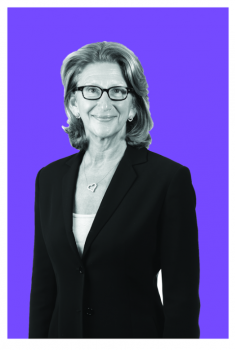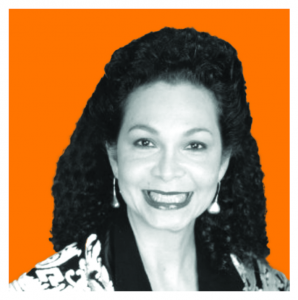From the August issue: Summer is traditionally moving time. For many New Yorkers, particularly families, that means leaving the city entirely. Nationwide, people aged 30 to 44 are moving to the suburbs at a faster clip than in the 1990s, according to the data analysis website FiveThirtyEight. And the New York Times recently reported that bidding wars were taking place across Westchester, northern New Jersey, parts of Long Island and lower Fairfield County, Connecticut, mostly in the under $2 million market. Unlike previous decades, the reasons to leave the city are no longer crime and blight. Instead, brokers say that many are so-called “reluctant defectors” who have been priced out of the city.
NYC-based brokers are now providing seminars that give buyers a lay of the land — as well as a little hand-holding. Jessica Fields of Compass, who co-created a lecture series called “Beyond Brooklyn” when she worked at Warren Lewis Sotheby’s International Realty, said that all three events she’s held have been filled to capacity. “I would say it was sold out, except that it’s free,” she said. “We had to cut off attendance because of space limitations.” Often, the search boils down to finding the familiar. Kathy Braddock of William Raveis said, “People are searching for what Brooklyn is and Manhattan used to be: the cheese shop, the butcher shop, the fish market, people talking on their stoops.” In the first web installment of this three-part Q&A series, we turn to Kathy Braddock of William Raveis NYC, and Helen Arden of Douglas Elliman.

Kathy Braddock
Kathy Braddock
Co-managing director, William Raveis NYC
There was a recent story in the NYT about NYC brokers teaming up with their suburban counterparts to host seminars and tours of the suburbs for Manhattan and Brooklyn families. What kinds of events have you spearheaded?
We have a program called “Raveis Escapes.” It’s designed to help people answer the questions, “Should I stay or should I go? If I go, where do I go? How do I go? Why am I going? What am I looking for?” We help people figure out the lay of the land. For instance, as you’re driving through Larchmont in Westchester County, you don’t even blink and you are suddenly in Mamaroneck, the next town over. For those who don’t already know the destination, which is many, our program walks them through all the possibilities — the traditional 75-mile radius of the tristate area. Then we help match them with the right [local] broker.
We advise clients not to focus on the specs of the house, like whether it’s a Tudor versus a modern. It’s about the commute, cost, lifestyle, activities. It’s also about whether it’s going to work for both you and your partner. We have to make sure both people are getting what they want. And the last people you have to worry about are the kids. The kids will be fine either way. No matter the square footage of the house, once they’re older, they won’t want to spend time with you.
Where are city buyers typically coming from and what are they looking for?
There is something for everybody. The question is how do you find what’s right for you. Not everyone who has $4 million wants to go to Scarsdale or Greenwich. People are individuals and families are individual. I can’t tell you a Wall Street banker wants to live in X, because that’s not the case anymore. Still, people from the West Side [of Manhattan] love going to the Hudson River towns and they always have. People from the East Side tend to go to the Larchmonts and Scarsdales. Connecticut is a bit of a mix.
People are also willing to go father than they used to go. Twenty years ago, you didn’t have smartphones, so you couldn’t do work on the train and you couldn’t FaceTime with your kids before they went to bed. Now, you don’t mind going to Southport, Connecticut. Some people work from home three days a week, meaning they can move to Poughkeepsie, which has a great train connection into Grand Central and cheaper housing. Twenty-five years ago, New Rochelle was not on the tip of people’s tongues. Now it has lots going on. It’s more of a city, you can get a bigger bang for your buck and it’s got all types of housing, including multifamily as well as beautiful homes. Yonkers has great magnate schools.
What are the biggest challenges of selling suburbia to NYC buyers?
The biggest challenge is playing shrink. We require both partners to be present. Sometimes your partner tells you something just to appease you, but they don’t really want to move. We want to hear what everybody wants, and those are hard conversations. The first question we ask is how long the clients think they’ll stay in the suburbs. If the answer is not three years or more, we advise people to stay where they are. Work stability is very different than it was 20 years ago from both ends, the employer and the employee. In the end, 20 to 25 percent of the people we advise end up staying put. Sometimes the thinking is, “The kid doesn’t even walk yet, so does he or she really need that much space?”

Helen Arden
Helen Arden
Broker, Douglas Elliman
What kind of services do you provide for clients interested in the suburbs?
Originally, my partner Oliver Gold and I thought we would conduct seminars. But once we started speaking to our clients, we found they felt more comfortable in smaller groups. People are intimated by big groups. They don’t want to sound foolish asking questions. We meet with one couple or a maximum of three couples. It gives us a chance to listen to their concerns. It’s been extremely effective.
What kinds of projects are you seeing, especially in suburban downtowns?
There is waterfront multifamily housing being developed [by RXR Realty] in Glen Cove on the North Shore of Long Island called Garvies Point. The developer is responding to a trend of people already moving out there. The buyers want to be near the train stations and have an easy commute. The developers are creating little cities, injecting new energy in the suburbs and focusing on downtown areas.
How are luxury properties in these suburban towns performing compared to the rest of the market? Are prices softening?
The luxury market in the suburbs is similar to the luxury market in New York City — stagnant. Destinations like Larchmont and Scarsdale in New York, and Greenwich in Connecticut, markets with houses above $3 million, are less in demand. It’s harder to recreate Brooklyn in those types of towns. Those towns have big houses with quite a bit of upkeep and maintenance. Today’s buyers do not want that. Young couples aren’t used to mowing the lawn, cleaning the pool, or hiring people to do those jobs. These people are moving out of the city because they are on a budget. They don’t want the added costs that maintaining those bigger spaces entails.
Which markets have the best deals? And which are most popular?
Port Washington, New York, has good deals available. The under $1 million market is very, very popular. The towns along train lines with easy commutes, that’s where you see bidding wars.
What are buyers from NYC looking for?
People are looking for schools. The price of private schools in the city is ridiculous. Meanwhile, our New York City public schools are not known to be the best. So good public schools in the suburbs have been a big draw.